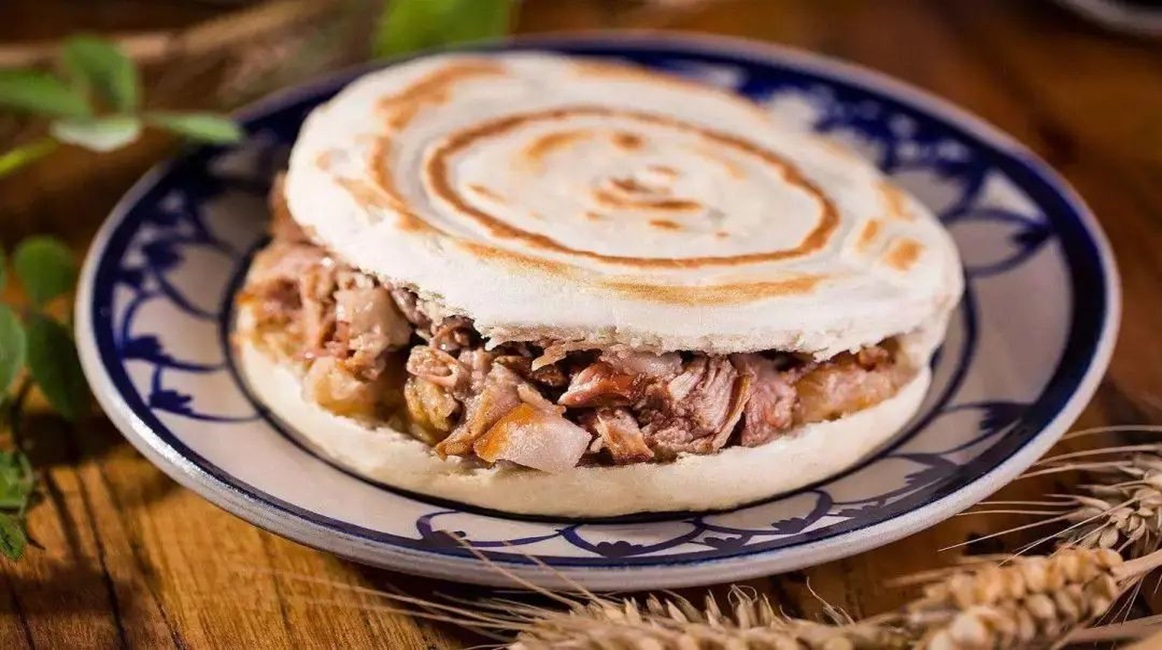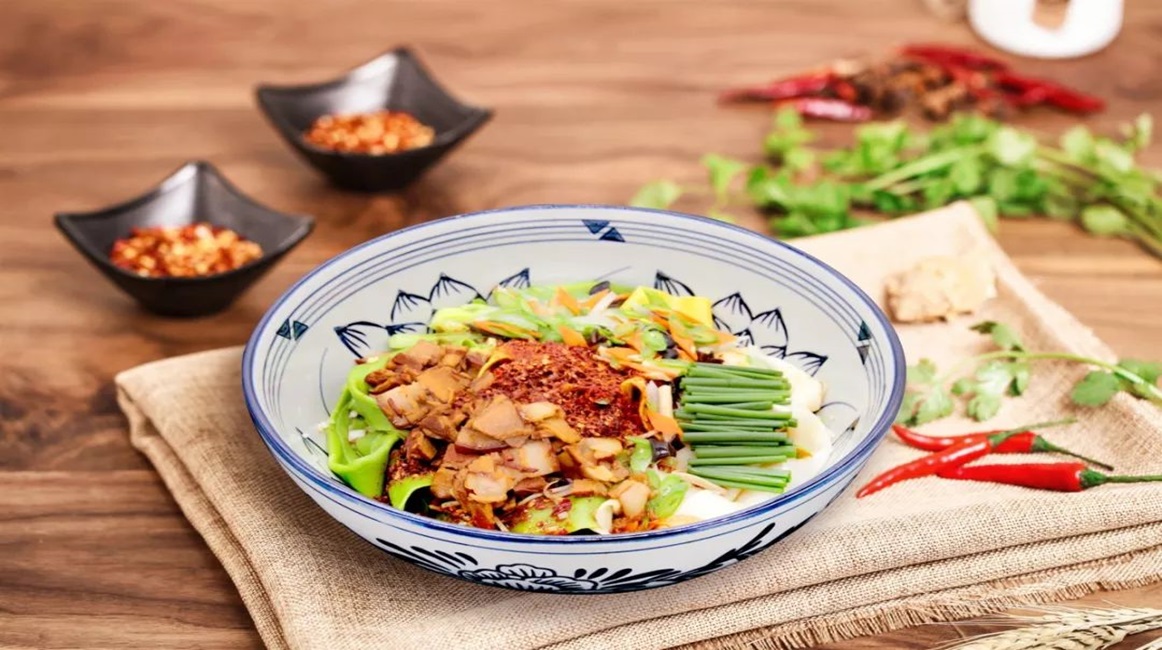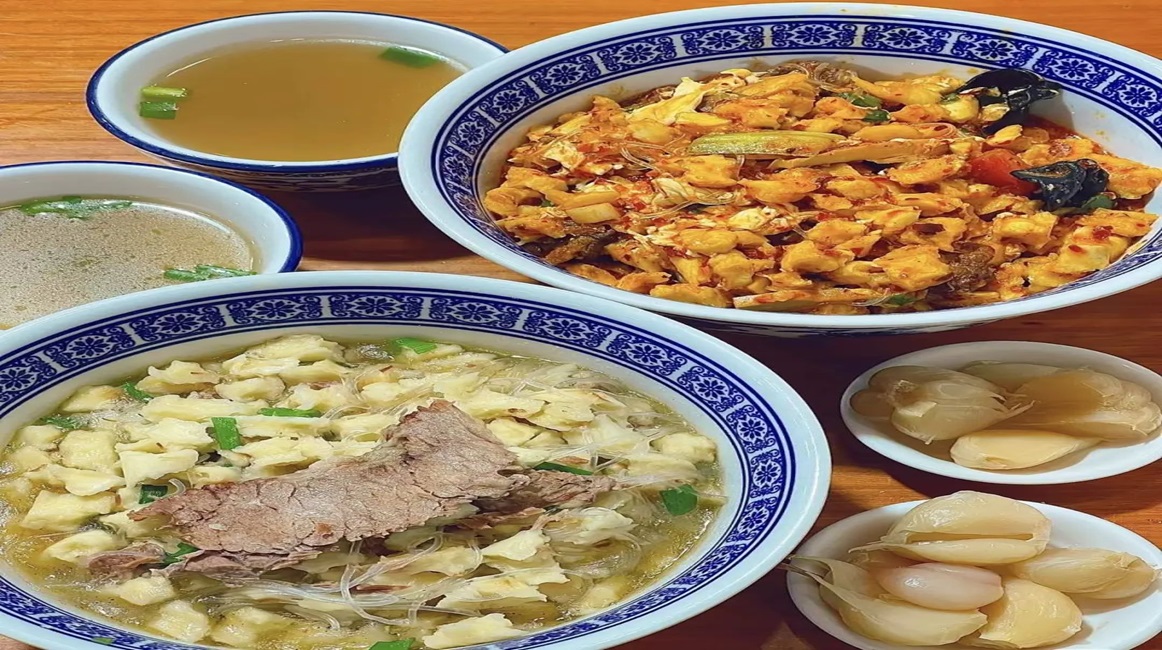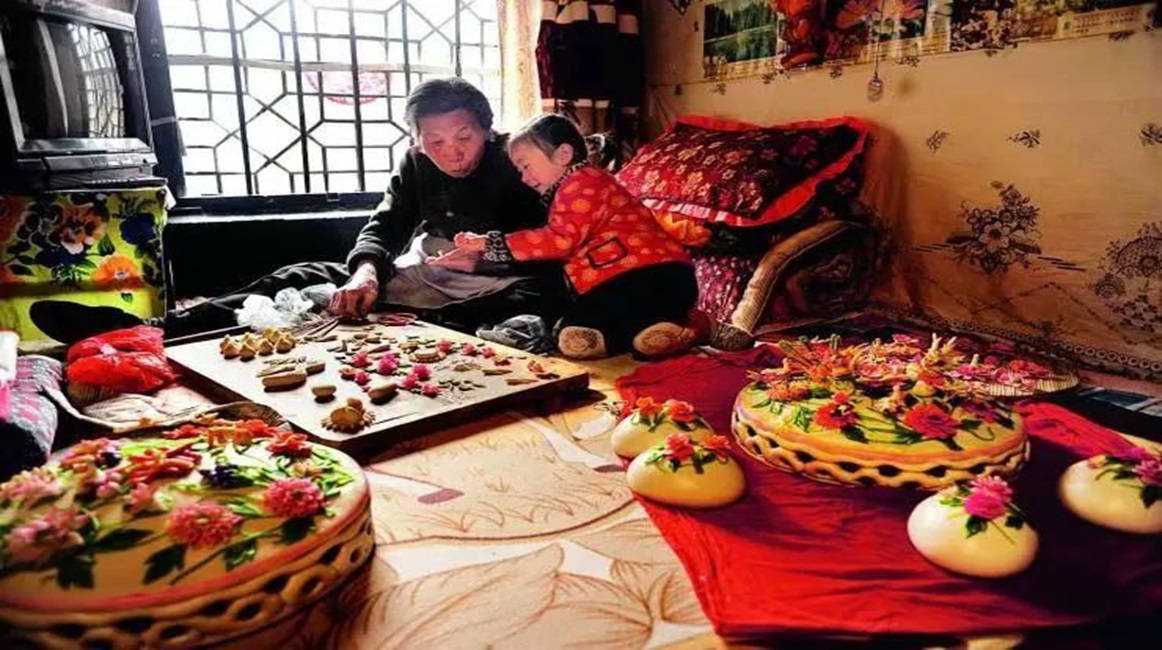If you love carbohydrate-rich food, then there is a city in
The must-try dish in Xi’an is the Roujiamo (meat sandwich), which ranks as number one on the local food must-try list. Roujiamo is beloved by the Chinese for its simple preparation, portability, and enticing flavor. It has proliferated throughout
Xi’an’s noodles are also unique, emphasizing handmade craftsmanship. The hand-pulled noodles are thick and wide, allowing them to capture the flavor of the broth and ingredients more effectively. This maximizes the enjoyment of carbohydrates. A scoop of hot vegetable oil is drizzled over the cooked noodles, instantly releasing its aromatic essence, creating a dish known as “Youpo Noodles.” Another popular handmade noodle is “Kudaimian” (wide belt noodles), which are stretched one meter long with a thick, pleated texture, resembling the waistband of ancient clothing.
Lamb or beef Paomo is another famous noodle dish in Xi’an. Originally a breakfast item for locals, it has broken free of time constraints and is now the first meal for many visitors to Xi’an. The deliciousness of Paomo starts with the lamb soup, which requires a skilled chef using a unique recipe to simmer overnight. In the morning, the soup emits an irresistible aroma, drawing patrons in. Diners tear the stale bread (mó) into pieces the size of soybeans, which are then cooked with the soup, meat, and vermicelli by an engaged “Paomo master.” This collaborative approach turns the meal into a flavorful experience, as participants feel more invested in their meal. The resulting bread absorbs the savory flavors of the lamb soup without disintegrating, pairing beautifully with special chili sauce and sweet garlic. The flavor is subtle yet deeply penetrating, creating lasting memories.
In this kingdom of noodle dishes, there exists a unique cultural sentiment — the art of making decorative bread known as flower bun. This intricately carved bread is believed to have originated from the Tang Dynasty’s palace. Over time, it transitioned from being a royal delicacy to a more folk-friendly form. However, it retains its lively and intricate craftsmanship, making flower bun even richer in variety and vitality.



